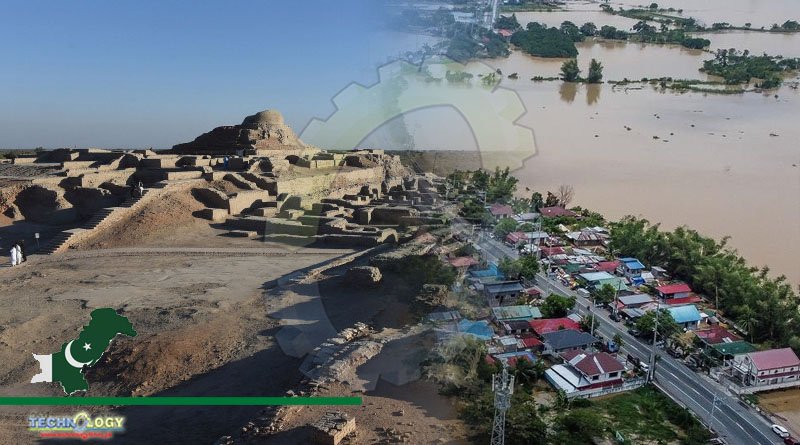Pakistan was a unique country with plenty of ancient archaeological, cultural heritage sites and mountain treasures that required proper projection.

Pakistan (PK) was a unique country with plenty of ancient archaeological, cultural heritage sites and mountain treasures that required proper projection, particularly through digital and electronic media, to ease the country’s economic and financial woes.
Despite having six world cultural heritage sites, including the archaeological wonder Moenjodaro in Sindh, Buddhist ruins at Takht Bhai, and neighboring city remains at Sahri Bahlol in Mardan and Taxila, ancient Indus and Gandhara civilizations, five highest mountain peaks of above 8,000 metres, including the second highest K-2 (8611 m), 108 highest peaks of above 7000 m in the world, Kalash culture in Chitral, and numerous historical sites in this key sector, Pakistan’s tourism revenue was very low by earning only $8.8 billion from this key sector in 2021.
According to the World Travel and Tourism Council’s 2021 report, the travel and tourism sector contributed only $8.8 billion, or about 2.9% of Pakistan’s total GDP in 2017, compared to $15 billion, or 5.7% of total GDP in 2019.Similarly, tourism growth has decreased by nearly 25% in 2020, falling to $11.6 billion or 4.4% of GDP, while tourism jobs have decreased by 11.1% from 3.45 million in 2019 to 3.63 million in 2020, primarily due to COVID-19.
“These six world-class archaeological sites, cultural heritage, and highest mountain peaks in northern Pakistan are properly showcased, particularly through digital media, to unpack its tourism potential while also addressing the country’s economic problems,” said Abu Zafar Sadiq, President of the Alpine Club.
He emphasised the importance of appointing digital professionals and experts to promote the tourism industry abroad, as well as ensuring good communications infrastructure, particularly in northern KP and Gilgit-Baltistan, in order to promote adventure and mountain sports here.
Pakistan, according to Abu Zafar, is the best country in the world for winter sports, particularly skiing in Nalthar Gilgit Baltistan and Malam Jabba Swat. Khyber-Pakhtunkhwa’s Swat Valley, Naran, Kaghan, Gilgit-Baltistan, and a lot more regions in the country were the most beautiful places where holding of rivers, rafting, paragliding, and snow sports can help attract foreign tourists in droves.
“We live in a digital tourism era. Technological advancements were rapidly transforming the travel and hospitality industries in developing countries, including Pakistan, and negative perceptions and opinions could be changed through effective and responsible digital media strategies and policies, as well as special programs and features to be explored through electronic media,” former Ambassador Manzoor stated.
“Scientific advances and modern technological inventions have virtually turned the world into a town, and our amazing tourism sites can be effectively explored before the world through the use of the latest gadgets, IT tools, and apps.”
He stated that in developed countries such as the United States, the United Kingdom, and China, the culture of publicising tourism destinations through brochures, booklets, and pamphlets had been replaced by digital tourism, and that Pakistan could fully exploit its tourism treasures by using digital platforms such as social media, the global positioning system (GPS), the internet, mobile apps, and artificial intelligence as the IT sector grew.
In this regard, he stated that Facebook, Whatsapp, Twitter, Instagram, and other effective social media services could be used for quick dissemination of information and projection of tourist sites to boost the rural economy, travel industry, and hotel industry, adding that the services of well-known vloggers, bloggers, and social media groups could be hired for tourism site projection.
Ambassador Manzoor stated that China has made rapid progress in promoting tourism and its “one belt and one road initiative (OBOR)” has proven to be a game changer, adding that CPEC, as a major component of OBOR, aims to improve infrastructure and transportation networks, which will greatly help promote tourism in Pakistan, particularly in GB and Khyber Pakhtunkhwa.
Malik Muhammad Luqman, senior planning officer, KP tourism and sports department, stated that KP tourism is being promoted through digital technology and social media. A Rs238 million project has been prepared to organise various winter sports and tourism events in various districts, including Swat.
Aside from Kalam’s winter gala and tour-de-cycle race, he said a sports rafting event on the Swat River and an international paragliding event at Saidu Sharif would be organized. New tourist spots would be developed at Sola Tanar, Puchar, and Jargo valleys, while walking tracks would be developed to promote tourism in Swat.
Camping pods would be established at new tourist destinations, and Kalash culture events would be organised in Chitral. It was also announced that Rs4.8 billion would be spent on the development and construction of new roads in KP, where a tourism police force would be established.
A tourist wing for the merged areas was being established to monitor and oversee tourism-related activities at the Sheikh Badin tourist resort, which would be built at the confluence of DI Khan and Lakki Marwat districts.
Luqman stated that the tourism budget was increased to Rs8.6 billion for 2022–23, while work on the World Bank-assisted KP Integrated Tourism Project, worth Rs17 billion, was underway in KP and that a Rs365 million project was planned for feasibility studies to identify potential tourism destinations.
